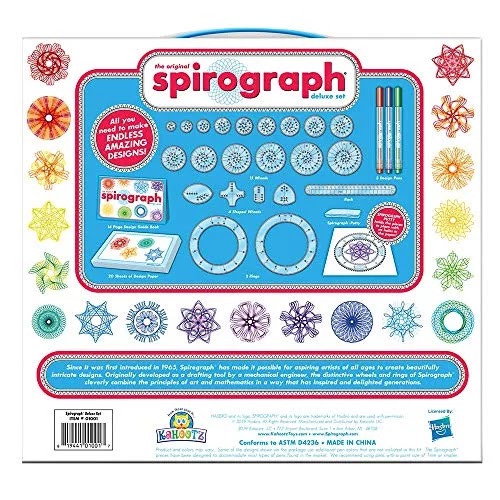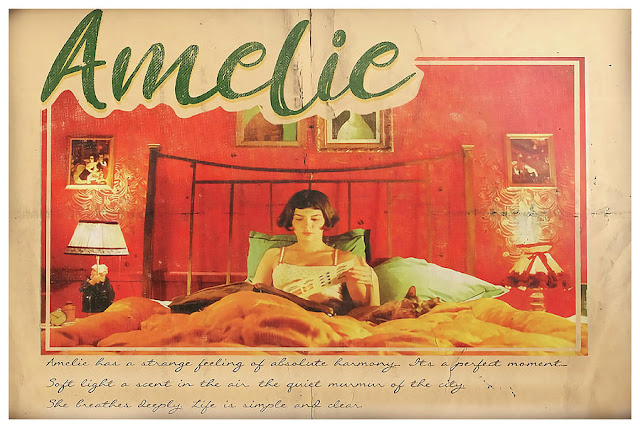Another indoor month, due to heat and humidity here this time of year, means lots of time for reading. Having run out of Silverberg SF books, I am now reading his trashy pulp novels, which actually are pretty gritty and not half bad. I am giving Michael Moorcock a rest for a few months, and returning to James Blish. Blish wrote several dozen critical essays about the stories in SF pulp magazines in the 50s and early 60s, under a fake name. I have a few of those books in hand. There were among the rarest of books by Blish, and unavailable for decades. However, thanks once again to the magic of Kindle publishing, I now have books I had given up hope of ever finding in stores.
Besides my five Avon/Equinox books, I plunged ahead with Delphi classics, beginning with stories by Wilkie Collins and Joseph Conrad, and also read some from beyond that incomparable series.
Gang Girl is from 1959 and is penned under the name Don Elliot (Silverberg). She's seventeen
and has a body that can turn young males into her own personal
playthings. They will even kill for her. Lora Menotti is one bad girl,
striving to get to the top of the gang when her family moves into new
digs in a different part of New York. Silverberg manages to get inside
this kinky girl's head, and we see what makes Lora tick. Mostly it's
sex, violence, drugs, and booze. The book has a lot of each of those
things. Like most bad people in 1959 movies and books, she does get her
comeuppance in the final chapter--she has made too many enemies not to
escape gang justice. The story is gritty and probably not too far
fetched for its time. I would not even wish to contemplate what
contemporary gang life is like.
The
first half of A Sword For Kregen, the 1979 novel by Kenneth Bulmer that continues the adventures of Dray Prescott, is standard fare for the series, meaning
that it is fun to read and advances the overarching plot. Dray has been
given a warning by the gods that his services as a warrior will soon be
needed again. He manages to tie up business at home before he is
yanked away again to a distant corner of Kregen. The second half of the
book is Bulmer's homage to Edgar Rice Burroughs' novel The Chessmen of
Mars. Burroughs' Martians love to play chess, and that book in the
author's Martian series features a game of human chess where the pieces
must fight to the death when moved to an occupied square. On Kregen the
board game of war is called Jikaida, and is played everywhere,
including at the beginning of this novel, as a game is taking place
between Dray and his wife (she wins, with a ruthless strategy). And so
Dray later becomes a piece in the game, and must fight. Besides redoing Burroughs (Bulmer also
gives instructions on how to play his game at the end of the novel, as did
Burroughs), a few tropes pop up in this story. For one, the climax is
yet again two males having a swordfight to the death. How original. For another, Dray
is the underdog against a much superior swordsman. So of course Dray
loses until the very few final seconds on the match, when his opponent
finally makes a mistake. Dray, with his very last strength, just
somehow manages to kill him. Yawn. Despite this, the book is again
very well thought out and executed. The series continues, with 15 more
novels in store. So far, so good. I can't believe I have last through 20 books.
From
1956 comes The Curse of Quantrill, a Civil War era historical western, starring that scourge
of the North William Quantrill. Quantrill was a Southern Captain in the
Rebel army. This story takes place near the end of the Civil War, and
near the end of Quantrill's short life. It is a completely fictional
account of the later years, with no mention of the James brothers being
part of Quantrill's Raiders. There are many nearly forgotten stories of
the Civil War. The criminal and violent things that Quantrill and his
men did, and those of the rival Jayhawkers, are quite unspeakable, yet
they are a part of almost any war. The same with a victorious Union army
as they marched through the South, burning, robbing, raping, and causing
economic disaster for the losing side. Even after the war a lot of
very nasty things went on that are best never forgotten, but always
are. Tubb gives a creditable account of life near the end of the Civil
War, and pulls no punches. A good read, and it made me research the
facts about Quantrill.
The Bend At The End of the Road is another
good collection of short essays by Malzberg concerning SF writing in
the 50s. Lamenting the demise of SF and trying to reason why might
drive a person crazy. Tolkien, Star Wars, and Star Trek seem to be the
main cause, as well as editors who only accepted certain types of SF for
publication. The great comeback in the 60s was due to the British,
mostly Moorcock's New Worlds publications, and within that, thanks
mostly to Ballard. This essay collection, published in 2018, contains essays written between 2007-17. It apparently did
not help that more than one Hugo was given out to works that were not SF
at all.
Malzberg is one of the most creative and funniest writers of SF I have come across in the Avon Rediscovery Series. After
reading even a few of his works, it can be seen why he did not become
more famous as a writer--his stuff does not fit the category of SF that
editors had been hammering into young minds since day one. However, it
is a shame that he did not even attempt to talk about some modern SF
writers. Given the dates of the essays, he does not discuss a single
contemporary writer. Not good, Mr. Malzberg.
Still,
these essays are essential reading for people interested in 50s SF, and
in discovering why SF writing disappeared (think dragons and elves).
You'll laugh, you'll cry, but you will continue to read the next essay,
until there are no more. Highly recommended for readers of this blog.
James
Blish wrote critical essays about SF in the 1950s and 1960s, ostensibly
to help budding writings in the genre. He wrote under the name of
Atheling, and his cover was not guessed for many years, when he finally
came out. He wrote about the magazine stories from the time, which was
virtually the only place to publish SF stories. The essays contained in The Issue At Hand are full of
insight, and make a very good handbook for young writers and older
editors. Having recently read many essays by Barry Malzberg on the
subject, Blish excels at getting to his point and proving it, something
that Malzberg's essays often lack. He was a very erudite writer, and
not above criticizing his own works in his essays. His emphasis on
stories of humanity often fell on deaf ears for those writers engaged in
space opera, but the essays invariably helped many writers, even the
pros. An invaluable gem of a book, unavailable for many years until it appeared
on Kindle. Praise Kindle!
On to the Delphi Classics! Wilkie Collins wrote a short novel in 1856 called A Rogue's Life. He made some revisions in 1879 for its first book publication (it had been serialized in a magazine). He wanted to expand it, but didn't have the time. A good thing, as it's perfect as it stands. The son of Dr. Francis Softly tries hard to make a go of things, to uphold his family's high position (through his mother). He tries learning medicine, but finds it not to his taste. Next come several very funny episodes where he tries caricature, goes bankrupt and is sent to jail; next comes portrait painting, also a complete flop. A friend gets him into painting old masters to sell as original works. A few times he runs into a beautiful young woman who makes his heart flutter. When the old masters racket is exposed, he flounders for a time. The young Softly is a terrific character for a novel, and I was very surprised to see that nothing has been done for TV or film with this work. It is a fun read, just long enough, with one of the most original endings I have ever come across. A rogue indeed! If you are a reader who has been put off by Collins' very (very) long novels, this would be a great place to dip into his writing. Highly recommended!
Next came a strange tale by Joseph Conrad, co-written with Ford Maddox Ford. The Inheritors is from 1901. Ford was a neighbour at the time, helping Conrad write in English. I didn't care much for the novel. Without the sea it doesn't seem like Conrad, yet. The book is well written, yet lacks action and emotion. It is a political thriller that takes place in London, the countryside, and Paris. The downfall of the old regime is in the hands of a heartless woman, who claims to be from the 4th dimension. Forgetting that, it is interesting to speculate on how many humans there are that we might know who don't seem quite human. Conrad digs up a few here, and shines a light upon them. The main protagonist, a journalist, is used by the lady to help achieve her ends. He is a pawn on her chessboard, who thinks that he has free will. He falls in love with her, and needless to say it is unrequited. At the very end, however, when the cataclysm has stopped its rumbling, she does confess a small bit of feeling for him. The book ends with the man a lost soul, with nothing to do and nowhere to go. The novel makes for an interesting read, but certainly not an engaging one. For Conrad completists, and those trying to assess the influence Ford had on the story.
Sometimes those tasks are so daunting that creating a workable plot with new characters can be overwhelming. Ms. Hillerman has three main characters to deal with in her novels. They are retired Lieutenant Leaphorn, police lieutenant Jim Chee, and his wife, officer Bernadette (Bernie) Manuelito. The author jumps back and forth between these three characters throughout most of her 8 or 9 novels. She not only deals with their police work (the retired Leaphorn is now a private investigator), but also their private lives. Both sides of the characters are usually dealt with really well.
In the current novel, "lost birds" is an actual moniker for Navajo babies who were adopted into white families to help them escape their origins, and assimilate them into white culture. This went on, protested by natives, until 1978. This novel deals with a 50 year old woman trying to find out who her birth mother was. There is also a murder, and explosion, and packs of wild dogs causing havoc (a real problem on the vast reservation). The several plots winding through the novel have some holes, but overall it is a good read. There is a vast area of NM we have yet to visit (next year, fall 2025?), as well as Monument Valley in Arizona, and some essential sites in Utah. Reading any Hillerman story, by Tony or Anne, puts me in places I would rather be. Though I can highly recommend most of the books by Tony, Anne does not always measure up to dad's level. She does come pretty close this time, though.
F. Marion Crawford's To Leeward was published in 1883. It is a mostly depressing novel that takes place during a hot summer in Italy. It begins optimistically enough, with a young and intelligent Leonora marrying Marcantonnio, a well off man from a noble and old Italian family. He loves her deeply, but it takes her a few months to realize she does not love him. She is a romantic young thing, and longs for a sweeping heroic manly man to come along and sweep her off her feet. Along comes Julius Bastiscombe, friend to Marcantonnio's sister. He sees the lovely Leonora and decides that he must possess her. Things escalate until the inevitable happens, and she elopes with the rogue. Marcantonnio goes mad and sets out to kill them both. So yes, a depressing story. It is well written, and the characters (there are four main ones, including the sister) are well drawn and quite believable. To me this would make a decent Merchant/Ivory type of film. If you like your love stories tragic and very warm, you might like this novel. However, the sudden and very brief ending to the story was disappointing. I prefer my endings to epic stories to be somewhat more spacious.
Griffin and Sabine by Nick Bantok was published as three small, very artistic books beginning in 1990. The second book is called Sabine's Notebook, and the third being The Golden Mean. These works were first brought to my attention by a friend when they were published in the form of a sort of game for PC. We bought the books afterwards, and gave them to my father. When he passed away earlier this year I got the books back, and read them. The story is told through letters and postcards only. The first book is the best of the series. Griffin is a designer of postcards, while Sabine is a stamp designer for a fictitious South Seas Islands country. He lives in London, and they began to communicate. A mystery lies at the heart of their relationship, and it is a great pleasure to gradually discover the mystery and its development. The second book seems to me too much of a frustration, as they each travel across the world to meet, but never do. Do they ever get to meet? Read the third book to find out. Besides the writing, the art is eccentric and quite fabulous, from the postcard designs and including the stamps. A fun idea well executed, and worth discovering for lovers of things odd and unusual.
Lastly comes one of the great adventure books of all time, The Lost World by Arthur Conan Doyle. Published in 1912, this influential SF novel still makes for fun reading. Somehow I had never read it before now, despite reading dozens of its imitators. Of course it was heavily influenced by Jules Verne, but so what. My Delphi Kindle edition included the original pencil illustrations. Readers can immediately tell that this is the way adventure books were written back in the good old days, since it takes six or seven chapters to really get going. But the entire exposition is priceless reading, especially where it concerns Professor Challenger, the man who claimed to have visited a site up the Amazon where prehistoric beasts still roam. He is certainly one of the more colourful characters from early adventure fiction. I found this to be a very fun read, despite the lack of female characters (though the lone female character does provide a chuckle or two at the end). Of course a Mary Kingsley type of character could have easily been introduced as one of the party, but that probably would have stretched readers credulity at the time more than the dinosaurs.
One of several original sketches included in the Kindle edition, done on site by Malone, the reporter who went on the journey with three others.
That's all the reading news for this month. See you in August.
Mapman Mike
































